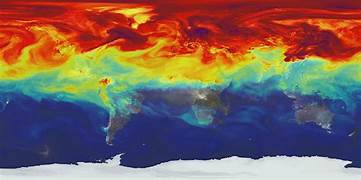AI in Predicting and Modeling Climate Patterns
Climate change stands as one of the most pressing global challenges of our time, demanding innovative solutions to mitigate its effects and adapt to its impacts. Among the many tools at humanity’s disposal, artificial intelligence (AI) has emerged as a game-changer in predicting and modeling climate patterns. By leveraging AI’s capabilities, researchers and policymakers can gain deeper insights into complex climate systems, anticipate extreme weather events, and design strategies to combat climate change more effectively.
The Role of AI in Climate Science
AI’s ability to process vast amounts of data, identify patterns, and make predictions has revolutionized climate science. Traditional climate models rely on mathematical equations to simulate atmospheric, oceanic, and terrestrial processes. While effective, these models often require significant computational resources and may struggle with capturing certain nuances of climate behavior. AI, on the other hand, excels in analyzing large datasets quickly and identifying patterns that may elude conventional methods.
1. Data Analysis and Integration
Climate science involves analyzing data from diverse sources, including satellite imagery, weather stations, and ocean buoys. These datasets are often massive, complex, and heterogeneous. AI algorithms, particularly machine learning (ML) techniques, can integrate and analyze these disparate data sources to provide a comprehensive picture of climate systems. For instance, AI can process terabytes of satellite data to track deforestation, sea ice loss, or changes in land use.
2. Enhancing Climate Models
AI augments traditional climate models by improving their accuracy and efficiency. Deep learning, a subset of machine learning, can capture intricate relationships within climate data, enabling more precise simulations of phenomena like cloud formation, precipitation patterns, and ocean currents. For example, neural networks have been used to improve the representation of clouds in climate models, addressing a longstanding challenge in atmospheric science.
3. Predicting Extreme Weather Events
Extreme weather events, such as hurricanes, heatwaves, and floods, are becoming more frequent and intense due to climate change. AI models can analyze historical weather data and current conditions to predict the likelihood and severity of such events. Early warnings based on AI predictions can save lives and minimize economic losses by enabling timely evacuations and preparations.
Applications of AI in Climate Prediction
The applications of AI in climate prediction are diverse, spanning from short-term weather forecasting to long-term climate change projections. Some key applications include:
1. Seasonal and Decadal Predictions
AI is helping scientists improve seasonal and decadal climate forecasts. For instance, machine learning models have been employed to predict the El Niño-Southern Oscillation (ENSO), a climate pattern that significantly influences global weather. Accurate ENSO predictions allow governments and industries to prepare for its impacts, such as altered rainfall patterns and agricultural disruptions.
2. Climate Change Attribution
Understanding the extent to which human activities contribute to specific climate events is crucial for crafting effective policies. AI techniques, such as pattern recognition, can analyze climate datasets to attribute changes in temperature, precipitation, or storm intensity to anthropogenic factors versus natural variability.
3. Renewable Energy Optimization
AI also aids in optimizing renewable energy systems by forecasting weather conditions that affect solar and wind power generation. Accurate predictions enable better integration of renewable energy into the grid, reducing reliance on fossil fuels and lowering greenhouse gas emissions.
Challenges and Ethical Considerations
While AI offers immense potential in climate science, it is not without challenges and ethical considerations.
1. Data Limitations
AI models require high-quality, extensive datasets to perform effectively. However, in many parts of the world, climate data is sparse or incomplete. This limitation can hinder AI’s ability to provide accurate predictions, particularly in developing regions that are often most vulnerable to climate change.
2. Computational Requirements
Training AI models, especially deep learning algorithms, demands substantial computational resources, which can be energy-intensive. Ironically, the carbon footprint of AI itself could contribute to climate change if not managed responsibly. Researchers are exploring energy-efficient AI techniques to address this concern.
3. Bias and Equity
AI models are only as good as the data they are trained on. If datasets are biased or unrepresentative, the resulting predictions may exacerbate existing inequities. For example, if AI models are primarily trained on data from wealthier regions, they may fail to accurately predict climate impacts in underrepresented areas, potentially leaving vulnerable populations at greater risk.
The Future of AI in Climate Science
As AI technology continues to advance, its role in climate science is expected to grow. Emerging trends and innovations include:
1. Collaborative Climate Models
Combining traditional climate models with AI-driven approaches offers a promising pathway for more robust and reliable predictions. By integrating the strengths of both methods, scientists can overcome limitations and improve model accuracy.
2. Real-Time Monitoring
AI-powered systems are increasingly being used for real-time monitoring of climate-related phenomena, such as glacier melt, forest fires, and air quality. These systems provide valuable data for immediate decision-making and long-term planning.
3. Citizen Science and Crowdsourcing
AI can harness the power of citizen science and crowdsourcing to collect and analyze climate data. For example, smartphone apps that allow users to report local weather conditions or environmental changes can feed valuable information into AI models, enhancing their predictive capabilities.
4. Climate Adaptation Strategies
Beyond prediction, AI is playing a critical role in designing and implementing climate adaptation strategies. For instance, AI-driven tools can help urban planners design resilient cities, optimize water resource management, and identify areas most at risk from rising sea levels.
Conclusion
AI has emerged as a transformative tool in predicting and modeling climate patterns, offering unprecedented opportunities to understand and address the challenges of climate change. By enhancing data analysis, improving model accuracy, and enabling real-time monitoring, AI empowers scientists and policymakers to make informed decisions. However, realizing AI’s full potential requires addressing challenges related to data quality, computational demands, and ethical considerations. As humanity strives to combat climate change, the integration of AI into climate science represents a beacon of hope, promising a more sustainable and resilient future for all.


